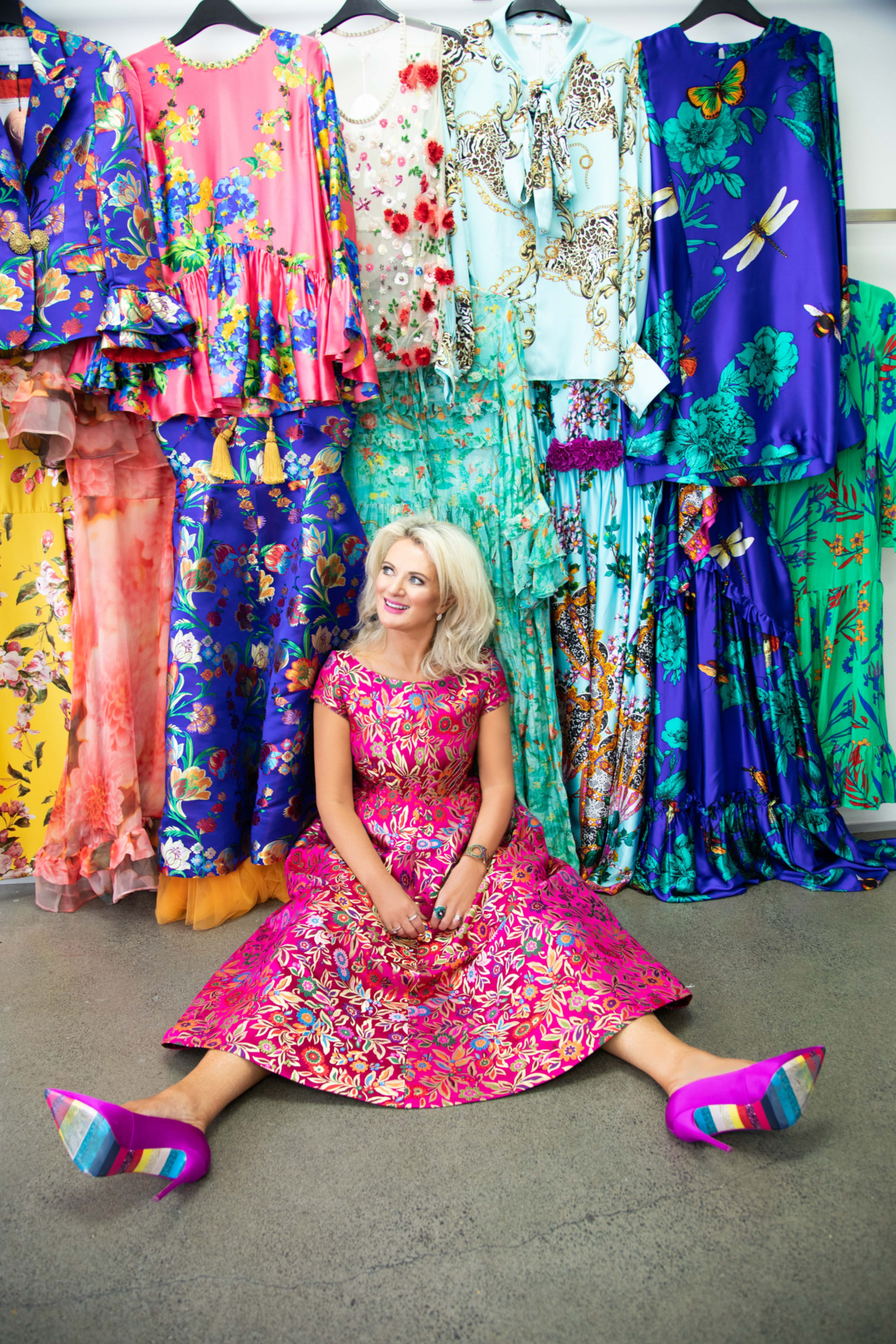You would be hard-pressed to find a New Zealander who hasn’t heard of fashion designer and businesswoman, Dame Trelise Cooper. Her name is synonymous with beautiful women’s clothing and it’s a reputation that has been over 30 years in the making.
The talented designer first got into fashion in the 1980s and currently has a thriving business with 10 of her own boutiques and 300 stockists in Australasia.
ACCOLADES
While her fashion endeavours are regularly in the news, Trelise is also a compassionate humanitarian and was named a Member of the New Zealand Order of Merit for her services to fashion and the community in 2004. Nearly a decade later in 2013, Trelise was inducted into The New Zealand Hall of Fame for Women Entrepreneurs for her significant achievements and, named a Dame Companion in the same Order.
Her many accomplishments and accolades are certainly inspiring, but are just part of Trelise’s fascinating story from a suburban upbringing in Henderson to showcasing her talents on a global stage.
STYLISH & ELEGANT
When we sit down for a chat at her elegant Newmarket head office, Trelise is welcoming and gracious. Initially she’s stylishly clad in a sleeveless black v-necked dress with twinkling silver details, her fair blonde hair is pulled back by a sleek black headband, with vibrant red lipstick and matching nail polish adding a classic feel to her look.
It is impossible to discuss a fashion designer without describing what they’re wearing, as fashion is foremost a business of aesthetics and as every fashion person will tell you, the real beauty is to be found in the details.
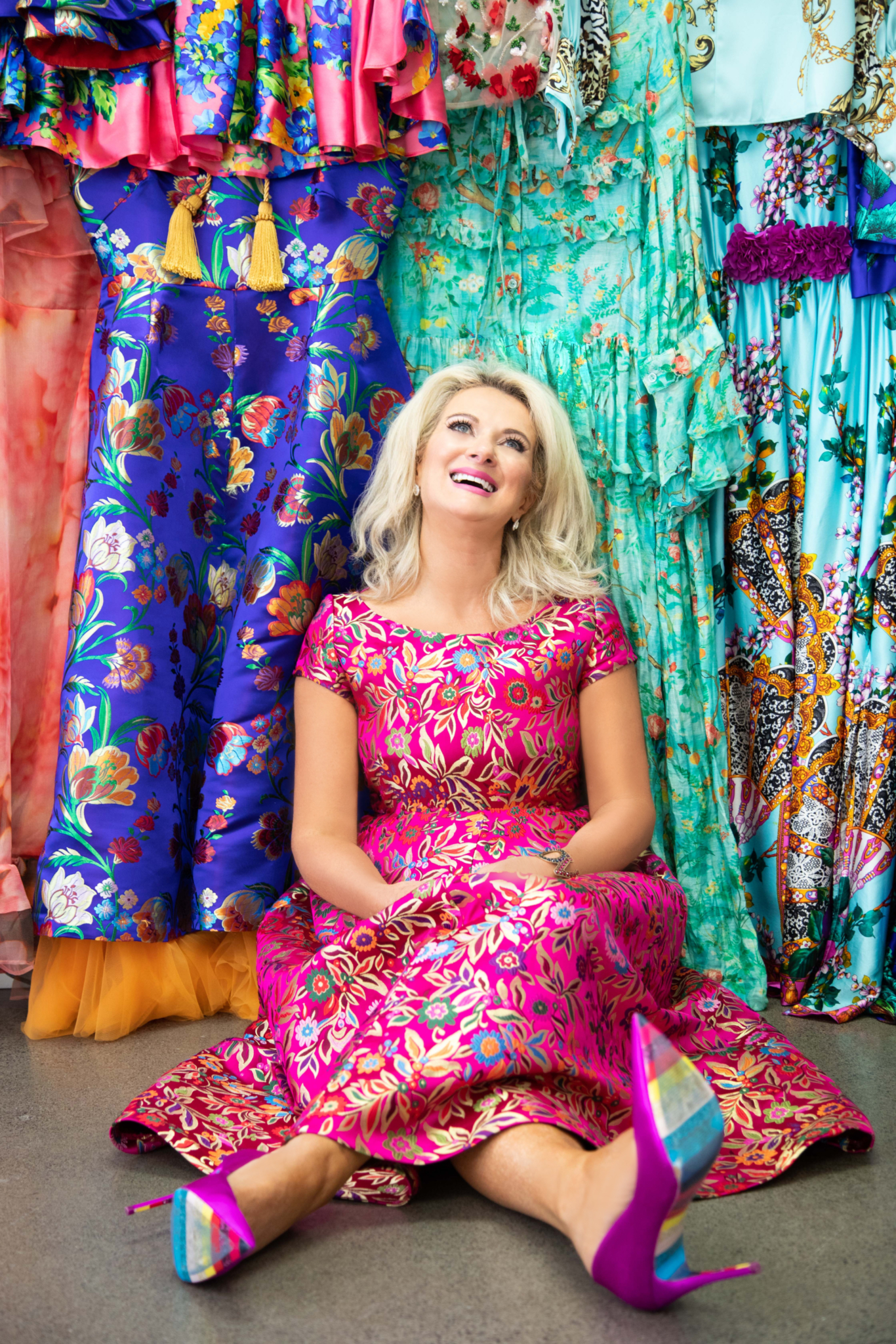
As a three year old I remember hugging shoes and going to bed with them.
DETAIL ORIENTED
Those details have fascinated Trelise Cooper from an early age, the designer recalls loving clothes and shoes from the beginning. Little Trelise would make multiple changes until she got an outfit just right and loved acquiring new clothes and shoes.
“As a three-year old I remember hugging shoes and going to bed with them,” she laughs. She was a smart child but also a dreamer and by the time she reached 15 decided she had had enough of school and set off to figure out her own path in life.
IN THE BEGINNING
An early marriage to her first boyfriend followed at 17 and while still a teenager she began running a business with her builder husband, demonstrating a strong work ethic already. By 21 things weren’t working out and she was divorced, working various jobs and looking for an opportunity to do something with her life. Trelise and a few of her friends started an employment agency that became successful fairly quickly and with money burning a hole in their pockets, the friends’ shared love of fashion saw them spending their profits on clothes, favouring New Zealand boutiques like Blanche Maude, Marilyn Sainty and Zambesi.
FINDING HER FEET
Surprisingly to those who know her as a creative force now, back then Trelise’s role in the business was administrative, as she paid the wages, managed staff and the office. “We had a really great business and once I left it continued on for probably another 15-20 years, but it didn’t thrill me and I didn’t like what I was doing,” she adds. By now Trelise had married her current husband, Jack Cooper, himself a fashion industry general manager. Her romance with Jack had helped Trelise to develop her own dreams of running a fashion label and having her own store.
FASHION IS CALLING
“I was on the edges of Jack’s work and he would travel for Sasson Jeans back in those days and I would look at what they were doing and think I could do that better, I know I could do that better. I loved fashion, I lived and breathed fashion and I had always been like that, it made sense to me to do it myself.”
EXPLORING SPIRITUALITY
It was at this time that Trelise was exploring her spirituality, having found herself struggling for meaning in her life post divorce
and searching for answers for things being so difficult. She had grown up in a strict Seventh Day Adventist home but wasn’t interested in the version of faith offered by the church. However, Trelise found herself intrigued by the new-age spirituality that was gaining momentum in the ‘80s.
“For me, new-age thinking brought me back to knowing God in my way. I’m not religious in a formal way, I’m not a church person, but I am a spiritual person and I do use prayer. My father used to quote from the bible, ‘What a man thinketh in his heart, so is he’, meaning, what you think about, you bring about. And that was very much the new-age teachings too. So I got in touch with what my deepest desire was, which is what they walk you through in those courses. And when I got in touch with that really deep desire, I wrote down stuff for it that was kind of audacious and fantasy filled.”
My father used to quote from the bible, ‘What a man thinketh in his heart, so is he’, meaning what you think about, you bring about.
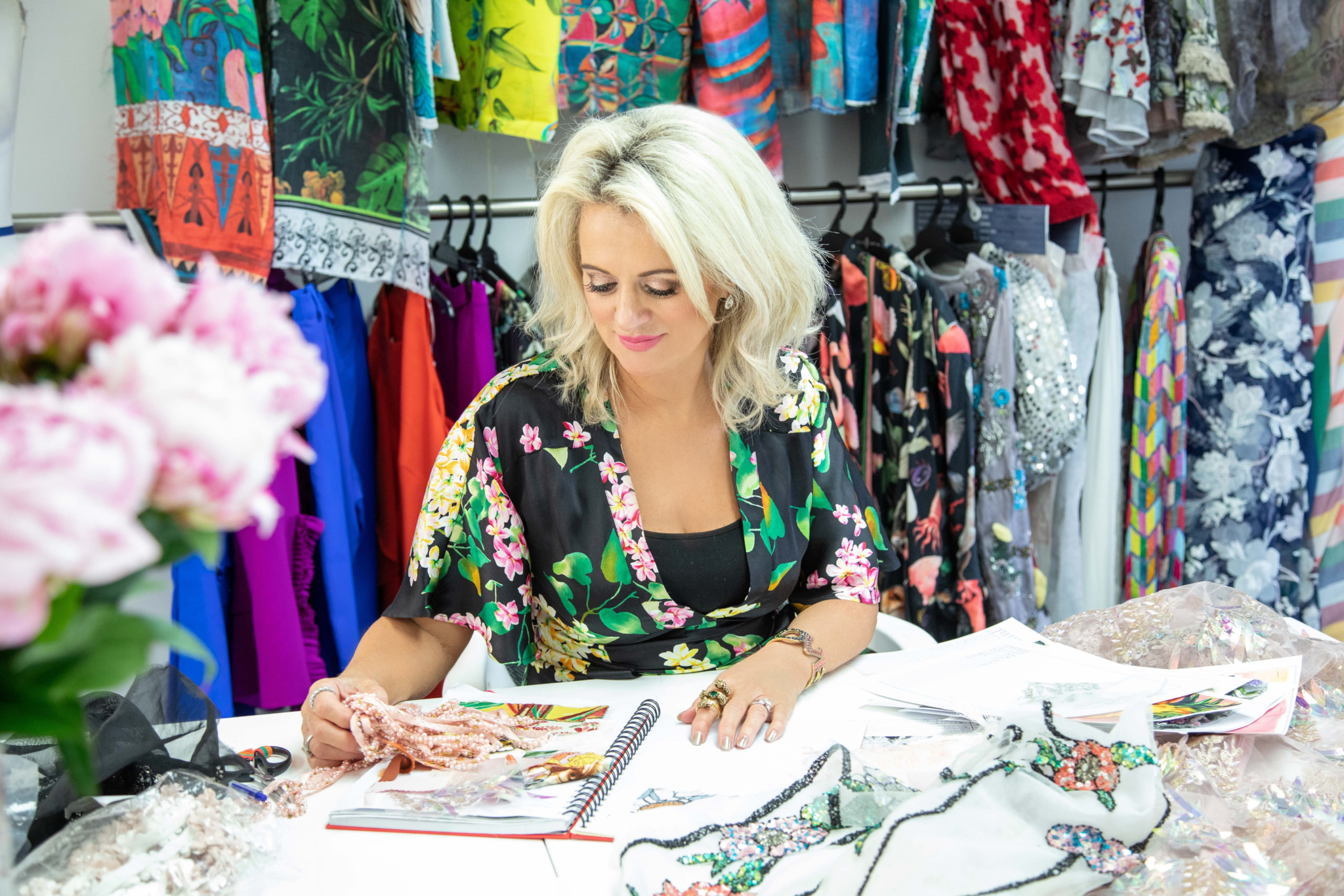
INNER GPS
Part of those teachings was to write down that dream as if it had already occurred. The idea being that you then put it aside as it’s not a goal you’re striving for but a way of setting yourself on the right path.
Trelise is a firm believer in following her intuition and being led by her “inner GPS that will drive me in the direction I want to go”.
NEW AGE
“So I totally practiced that,” she adds. “I was so into it, I did lots of rebirthing, lots of meditation, lots of massage. I was around all kinds of spiritual people with all kinds of different practices, it was a very hippy kind of time, I guess. But I really absorbed it and I attribute all of those teachings to sitting here as I am today, because I’ve used them all the way through my life and they actually work.”
DREAMING BIG
That big dream of Trelise’s was to be a fashion designer and have her own store. She wanted to open a space for women about women, a place where women could come and not be judged.
Right from the beginning she was clear on the kind of textiles she wanted and set her sights on going to Europe to buy European wools, linens, cottons and silks direct from the mills, which was unheard of in those days. Most designers in New Zealand waited for agents to bring them fabrics to choose from but Trelise was determined to do things her own way, and still does today.
A DREAM JOURNAL
Anchoring her dreams was Trelise’s dream journal where she detailed exactly what she wanted from her chosen career. Those details included flying to Europe first class to look for fabrics as well as being able to buy a brand-new car off the shop floor. Those dreams were very vivid to Trelise, she could smell the new leather of the car and feel the comfort of that first-class seat so she wrote them all down as though they had already happened.
FIVE YEARS LATER
Fast-forward five years, and the designer came across that detailed dream journal and was amazed to find that she could tick them all off. “And I did creak across those old parquet floors in the linen mills in Milan but it was not in a conscious, driven way,” she adds. “It was in an unconscious, intuitive ‘this is where I’m being led’ way. I was told back then that opportunities whisper, they don’t shout, and I guess that was kind of what I was listening for - that opportunity whispering - and I was open to that. In conjunction to all of that is to have gratitude and to be thankful. Write down that dream but give thanks for it already occurring, and so I did a lot of that. I did a lot of gratitude in amongst it all and I do think that’s why I sit here today.”

I know I could do that better. I loved fashion, I lived and breathed fashion and I had always been like that, it made sense to me to do it myself.
SETTING INTENTIONS
Aside from setting her intentions early on, Trelise was also researching by default as she travelled overseas with Jack for his fashion work, absorbing the details of showings and sales meetings along the way. Her love of buying beautiful, quality linens from Blanche Maude and gorgeous fabrics from Zambesi and Marilyn Sainty meant she had learned what she wanted to be making quality-wise and set about finding the right suppliers to help bring her vision to life.
HER FATHER’S INFLUENCE
She had an ambitious plan for what she envisioned the Trelise Cooper brand to be but it was her upbringing that had convinced her to go for it and she credits her father’s influence in her success. “My dad was a teenager when he was married and a father, mum and dad were both teenagers and my father had grown up poor and never wanted his children to experience it so he was highly ambitious. He was so driven and I really absorbed that. I know I can have a good life but it’s down to me. I think that’s what I really learnt from those new-age teachings, that everything in our life is self-responsibility, we’re totally responsible for our own selves, and that was a great lesson.”
JACK’S SUPPORT
Another influence in Trelise’s success has been the unwavering support of her husband Jack Cooper, who encouraged the designer to follow her dreams and has been beside her every step of the way. “The great thing about Jack is that he has always been a huge believer in me, and I find it a bit embarrassing sometimes because he totally believes in me and nothing will sway him, but his support is invaluable.”
TAKING RISKS
When Trelise first went out on her own in the early 1980s she mortgaged her house and worked day and night to make her dream a reality. It wasn’t an easy thing to do and while Jack had his own work during the daytime, during the evening he would drive around with Trelise to makers, cutters and patternmakers to get her production underway. Neither one of them knew that side of the fashion business at the time but figured things out as they went along, making mistakes but learning quickly as her business grew.
Write down that dream but give thanks for it already occurring – I did a lot of that... that’s why I sit here today.
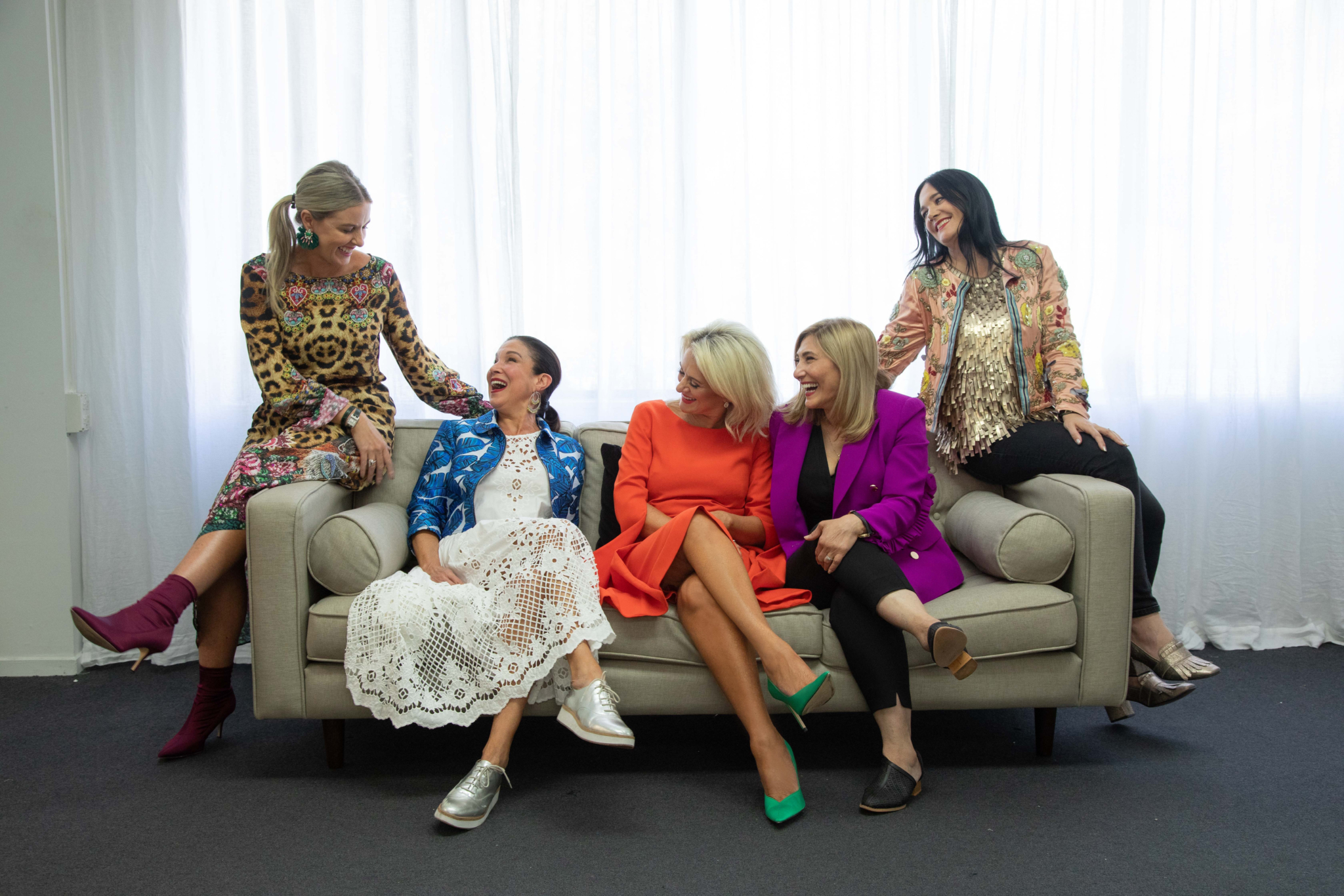
JACK JOINS
Jack joined the business full-time in the mid-1980s when the Sasson group got sold to a bigger fashion group. He supervised production for the brand and became a dab hand in the workroom. At the time the business had grown significantly with 30 machinists in the workroom and a boutique ‘Limited Editions by Trelise Cooper’ at 20 High Street in Auckland’s CBD that opened in 1985.
BECOMING MUM
It was the arrival of Trelise and Jack’s beloved son Jasper that changed the focus of the new mother’s life and in 1989 they closed the business so she could spend more time with her son. While she enjoyed being a stay-at-home mum and was happy to support Jack in his fashion career as he opened fabric wholesale company Cooper Watkinson Textiles, Trelise always knew she would go back to her own label at some point.
RELAUNCHING
In late 1996 she relaunched her business, this time as an eponymous brand, but it wasn’t exactly smooth sailing. “Jack was initially keen for me to start again but then didn’t really love that I was working when he already had a massive career and needed the support at home but I was busy. He felt like I didn’t need my own business because he was generous and provided enough and that’s absolutely true, he was.”
TAKING CHARGE
But by that stage Trelise had come into her late 30s and like the women in her friendship group had status, a beautiful home and travel, and was happy in their Remuera, eastern-suburbs existence. “However, a couple of them one day came home and found they had none of it left because their husbands had gone off with someone else, and they hadn’t worked for maybe eight or 10 years so they had no career, no confidence, children and a very changed circumstance. And I thought I don’t want that to ever happen to me, as I could see how it had happened so easily in their lives without them having any warning.”
Trelise was determined that if things went pear-shaped in her relationship that would not be her circumstance and decided she needed to take self-responsibility and be independent. It was a decision that was difficult for Jack to take and resulted in Trelise keeping him out of her business for a while until she became his biggest customer at Cooper Watkinson Textiles and their personal and professional lives once again intertwined.
WORKING TOGETHER
The two of them maintained a good professional relationship until Jack retired from his business several years down the track. However, six years into retirement and with a growing interest in the digital space, Jack once again returned to Trelise’s business in 2011, this time to set up the online store and run her new digital team. The online store has been a huge success for the Trelise Cooper brand and although both Trelise and Jack are very strong-willed people, they continue to work together today.
A DOMINANT FORCE
“The online store has been a great part of our working lives together but I can’t say that in all of our journey the working together has been easy because we’re both dominant, or should I say domineering,” laughs Trelise. “We’re both strong personalities, we both really believe in what we believe in and we are really vocal with each other, so there is a lot of passionate discussion at times. There is a lot less now that we’ve both got to the age that we have. We’re both way more in sync than when we were younger and we’ve come to great harmony at this point in our lives together.”
LOVE, TRUST AND LAUGHTER
Coming into Trelise’s business again was still a big adjustment for Jack, who was used to running his own show, and the first couple of years were another learning curve for them both. Defining their roles helped with that adjustment and now the couple is clear about the fact that Trelise is the boss and he defers to that boundary professionally. Living and working together all the time can certainly be challenging but Trelise and Jack have built a strong relationship on love, trust and laughter that has been integral in maintaining balance in their lives.
What I know about this business is it doesn’t matter what you do, there will always be something more to do, it’s never finished, but there are absolute deadlines.

WORKING HARD
The fashion industry is notorious for being demanding and fast paced, which can make that work/life balance hard to manage. For many years Trelise worked every hour she could to do what was needed and didn’t take much time off for herself.
“I always talk about it as integration. But I guess what I know about this business is it doesn’t matter what you do, there will always be something more to do, it’s never finished, but there are absolute deadlines. I’ve gotten much better at understanding what they are and what needs to be done to meet them and trying to do them within normal working hours. It’s only a rare thing that I go outside that now. We used to regularly work until 2am and I don’t know how we did that.”
Recently, Trelise and her team had a big project on that required those extra hours but she was reluctant to ask her staff to stay late as she doesn’t think it’s healthy for anyone.
Her staff volunteered to stay on and help her to meet the deadline and she credits their dedication to get the job done. However, she doesn’t expect them to do it on a regular basis and has systems in place to manage the intense workload the fashion industry requires at her level of business.
THE WISDOM OF EXPERIENCE
“I’ve become much wiser about managing the deadlines. And the deadlines are probably tougher now than they’ve ever been and there are more collections now. We do 16 collections that I design, and then another five on top of that which I curate and so it’s a huge workload, but I do it within my day and I make sure I go to the beach and up to Leigh if I’m in New Zealand and I switch off completely. I don’t work in the weekends unless it’s an exceptional circumstance.”
LEARNING TE REO MĀORI
You could understand if Trelise wanted to spend her downtime watching television or fast asleep but the designer loves to read and learn in her spare time and has recently begun studying Te Reo Māori. When pressed as to what prompted her studies, the designer is frank about how important she feels learning the language is to New Zealanders. “I feel like we’ve got to this point in New Zealand that it’s respectful to know some more. And the more events and places I go to, the more I feel like I should know this and that I don’t know enough and so I really want to.”
While Trelise takes her books with her when she travels, she wants to get a Te Reo tutor when she has more time between travelling to immerse herself properly in the language.
A PASSIONATE LIFE
Her passion certainly carries across in everything Trelise does and when it comes to work she recognises how fortunate she is to be doing something she loves each day, which makes the stress of running a business a bit easier. The designer recently came across a quote about stress and passion that she refers back to: “Working hard for something we don’t care about is called stress. Working hard for something we love is called passion.”
MEANINGFUL PURPOSE
It certainly rings true for Trelise who admits that while there is a lot of pressure on her, she truly loves her business and that passion is everything for her. “That love of what I do is why I can get up and do it every day, day in and day out. I absolutely still passionately love it and I think when you can find that, you’re lucky. I think it’s our goal in life to find what brings out that kind of true passion because it makes life meaningful and gives purpose.”
COMPANY CULTURE
Finding the right people that share your passion can be one of the biggest challenges in business and over 30+ years Trelise has certainly had a lot of experience in managing people.
Although she wants them to like her and her to like them, she also realises that it’s not always an option on everything because everyone sees things differently. The most important thing to her is to find people that are a good cultural fit for her business.
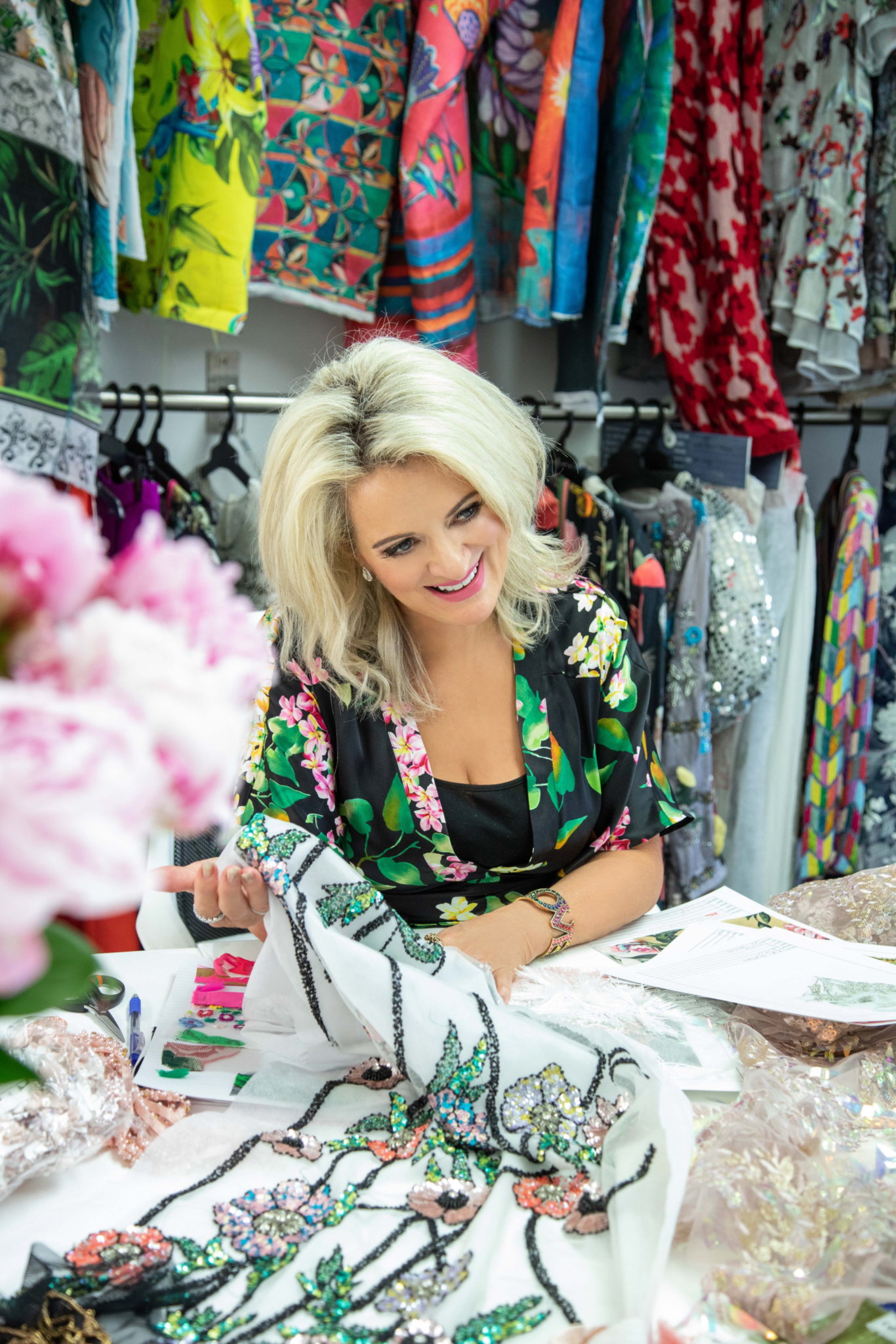
Working hard for something we don’t care about is called stress. working hard for something we love is called passion.
GETTING THE TEAM RIGHT
“We have a really steady staff, we’ve got probably 150 employees and we have not had a lot of change, especially in the design area, which is the area I work in. That has had very little change in quite a while, the past six or seven years. Before that it was definitely not easy but what I’ve learned is that you cannot afford to allow people in your space that are disruptive because that’s kind of cancerous and has to end quickly.
I love coming to work but I can’t say that has always been the case because I kind of felt like I was walking into enemy territory at times previously, but I haven’t had that feeling for such a long time and it’s a real joy. I enjoy coming to work, I enjoy the people I work with and in fact I travel with them, I take different ones with me on overseas travel because it’s fun and because it’s a little treat for them and they learn something more and it is inspiring for them.”
SMART STAFFING
Her advice for those who are hiring staff is to slow down when interviewing and choosing, making sure to first look for the right cultural fit. Personality is everything and getting the right fit is important.
She also looks for those who like to do things for others, as giving to others shows someone’s character.
When it comes to day-to-day management of staff, she advises to provide the right resources they need to do the job and to show your people that you care.
STRENGTH TO STRENGTH
The designer admits she’s on a constant learning journey that never ceases but that she’s gotten better at finding the right people for her business. Although she knows they ask a lot of their staff because of the fast-paced and demanding nature of her business, she is also keen to acknowledge success.
Over the past six years the business has gone from strength to strength so its stability has helped keep staff happy and that success has kept growing too.
TOUGH TIMES
“When you’re under financial stress, when things are not selling, when things are not going as well, that’s hard work and that kind of underpinning hum of stress and pressure is awful. We don’t have that now, what we have is success and it kind of builds on itself and so we all want to keep having the next season be even more successful. That’s what has been happening, we build on that success and that’s been great. We haven’t had a step back thank goodness.”
Things were quite different for Trelise’s business a decade ago when the world was in the grips of the global financial crisis. Like many businesses things got really tough and she admits there was a time when she thought she might lose it all. “It was really, really hard and it kind of bit deeply in our biggest retail market of Australia and we lost that entire turnover. I feel like New Zealand wasn’t quite so bad but it was definitely felt in America where we had a big market and they didn’t pay. And then the Australian market died on us and we had a lot of income out of Australia that just wasn’t replaced for many years. But now that’s come back again and Australia is really strong for us and has been for probably the last three or four years.”
RESILIENCE
During those rough few years Trelise admits she had poor management but she didn’t realise it at the time, which turned out to be quite disastrous for her business. Although she describes that time as “very hard and really scary”, she learnt some important lessons personally and professionally and is thankful her business came out the other side of it all.
“I know when I was going through those hard times it felt like a great failure, but in actual fact it’s only failure if you don’t get back up again. And so I just dug deep and I guess that’s what they call resilience these days. I know when I look back I was resilient, I wasn’t going to be put down by it and I was not going to let it beat me, so I fought hard. But I guess when you’re going through it, you’re probably not so easy to be around.”
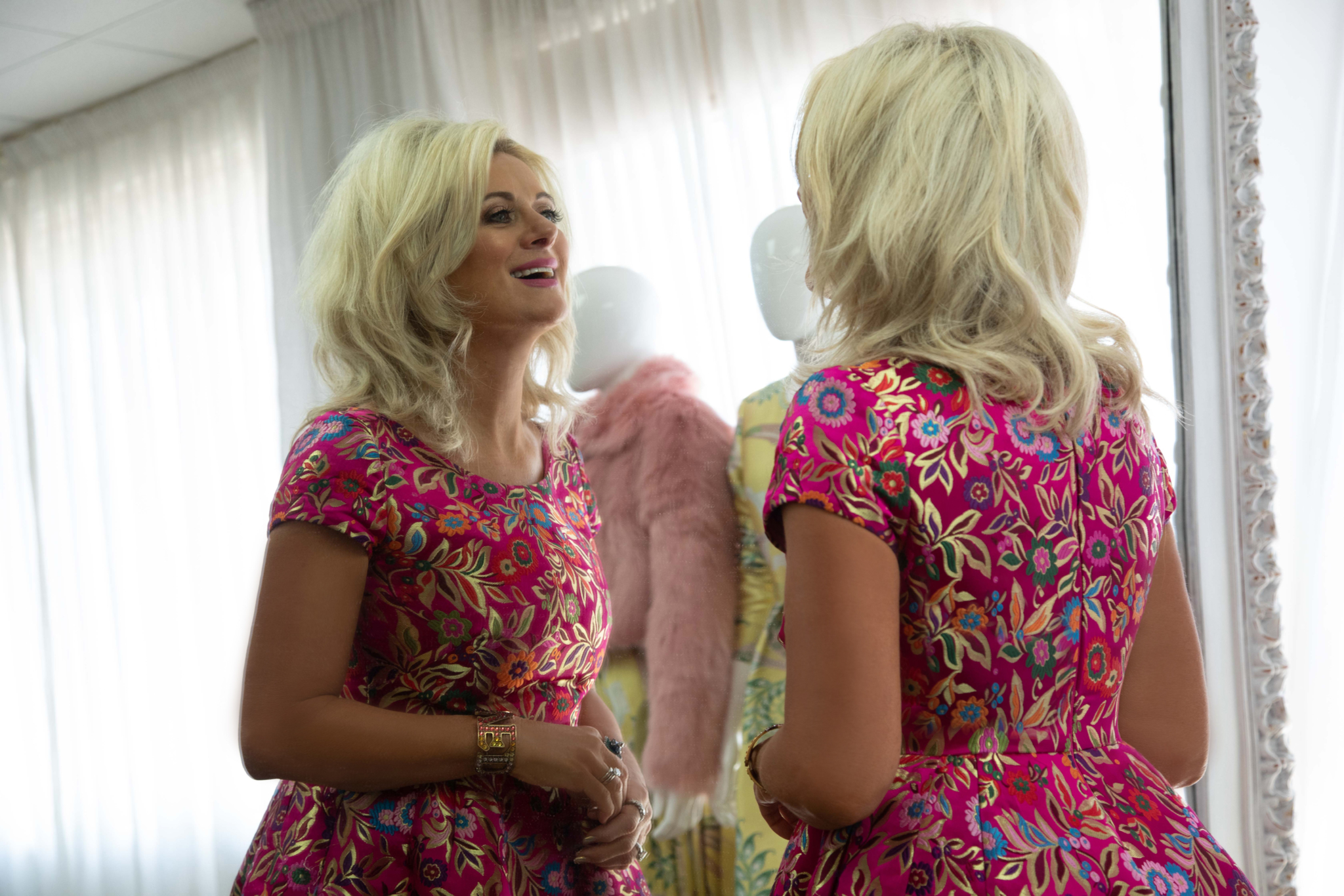
...you cannot afford to allow people in your space that are disruptive because that’s kind of cancerous.
A RELUCTANT CELEBRITY
It’s one thing to be going through a difficult time in private but due to the nature of Trelise’s business and her public profile, it added another level of intensity to things. While it is Trelise Cooper’s name on the door and the clothing labels, she is also the face of the brand and over the years has become somewhat of a reluctant celebrity. It’s a spotlight that she has alternately enjoyed and loathed and while it was once part of her dream to be recognised, these days she could quite happily do without the media attention and public scrutiny that comes with it.
For Trelise it heightens everything she does and means she has had her fair share of being savaged in the press and is regularly recognised in public wherever she goes. For the most part she has found people that approach her in public to be very kind and the designer is happy to acknowledge those who want her attention. But being a known person also comes with those who have no qualms about being unkind in public and for Trelise the more well-known she has become, the more vulnerable she feels in public on her own.
“I once knew a really famous New Zealander, I used to dress her and make her made-to-measure garments, and she could not do anything without having a friend with her, next to her, and I get that. Because now I find if I’m on my own walking through any public space like an airport that I like having somebody who I can chat to and kind of deflect the attention. I try not to notice it because what do you do with it when people are staring and recognising you? If someone catches my eye I will always try to give them a smile but yeah, it’s a very odd thing.”
I know when I was going through those hard times it felt like a great failure, but in actual fact it’s only failure if you don’t get back up again.
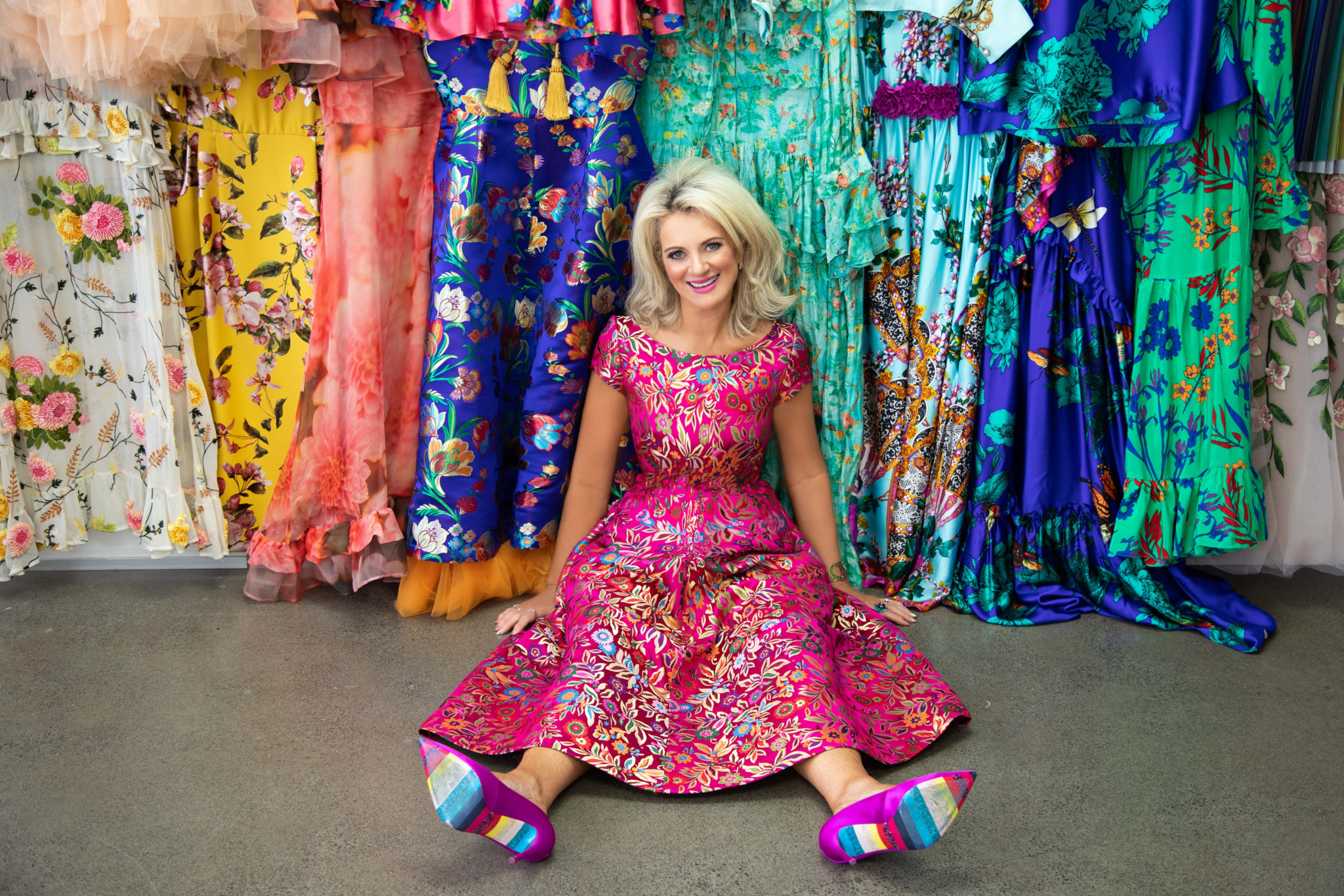
CAMERA SHY
Unsurprisingly, Trelise is not a big fan of people trying to take her photo surreptitiously either. Since everyone has a camera on their phones, it means we can snap away at any moment but no one really wants to be caught chewing mid-sandwich, especially when most people’s first instinct is to share that not-so-flattering snap on social media. “That’s probably the most invasive. I don’t mind people having a photograph with me but I kind of like them to ask. It’s when they try and take it surreptitiously, people think they’re not being obvious but they really are,” she laughs.
THE POWER OF SOCIAL MEDIA
While the designer doesn’t have her own personal social media accounts, she takes an active interest in her brand’s social media and uses it to share occasional glimpses into her life as well. She’s aware that there is a level of public curiosity about her life, especially from her brand’s followers, and it is a way she can share snippets from her life and her travels while maintaining her privacy online. When it comes to social media for her business, however, she is well aware of how powerful it can be and is quick to extol how important it is for business. Although she was initially a bit skeptical, these days she is almost evangelical about it when it comes to business, insisting to any of her friends who have businesses that they get involved with it also. Her accounts get regular trolling comments as many brands do but she chooses to focus on the good side of social media and was recently in awe at the huge success of an in-house competition.
A LOVE-FEST
“We had over two million views for it and 53,000 people commented,” she enthuses. “And they were great comments, they were beautiful, they were the most lovely love-fest, heartfelt stuff. Not about me but in answer to the question we asked. I was astounded that we could get that many views and that many people engaging with us. It has the power to reach that many people and that’s incredible.”

I believe that courage is not a lack of fear but acting in spite of fear. I think you cannot be in business without that courage.
SUSTAINABILITY
Like many fashion businesses, Trelise Cooper’s business has been on a sustainability journey for several years now. For Trelise it began in 2008 with the development of her supermarket eco bags, which were on shelves long before single-use plastic bags were removed last year. It’s a legacy she’s rightly proud of but sustainability is also something she has applied to her business model in many ways.
ETHICAL PRACTICES
Trelise makes no secret about the fact that she has long done some of her manufacturing offshore. While many of her pieces are made here in New Zealand, the complicated nature of her garments and her favoured use of beautiful embellishments like sequins and beading has meant she has had to go to countries that have invested in machinery that isn’t available here. Her manufacturer in China uses the kind of specialist equipment that costs $1 million dollars per machine which is well out of reach for the remaining New Zealand factories, but means she can offer exquisite garments to her customers that she wouldn’t be able to otherwise.
The designer takes her commitment to ethical practices seriously and regularly visits her offshore factories herself with her production team from New Zealand to ensure her business standards are met and that she’s happy with how the workers are treated etc. Over the years she has built strong relationships with her manufacturers, although it was not easy in the beginning to even find the right factories and Trelise has invested a lot of money in sourcing them. It’s no wonder many fashion businesses wish to keep the locations of their factories private, even though some organisations are pushing for every detail to be made public. In a highly competitive industry like fashion it’s not uncommon for businesses to lose out when someone who offers to pay more money or has more volume to offer comes along.
BUILDING RELATIONSHIPS
“It is hard because to do it right you have to get on a plane and go there, you have to travel two hours on a fast train and get picked up at this end and that end and pay for drivers and it’s expensive. We’ve done it for years but because it is such a big investment it’s my biggest IP, I’m not sharing that around because once I share that and others go, then I have to wait in line and my production gets pushed back while somebody else who found out the details on my website cuts in. I think if you’re in a big corporate in the US you can do it because you’ve got the power of volume. When you don’t have the power of volume as in my case, I’m fighting every day to get my goods made and ahead of anybody else so it’s about relationships. And we’ve got long-held relationships thank goodness and they like working for us, and they know they’re going to get paid.”
DIGITAL NATIVES
While Trelise admits that some other businesses are better at story telling when it comes to sharing their own sustainability journeys, it’s something her team is working on. Having young digital natives working on her social media has been an eye-opener for the designer and she is a fan of their fearless and intuitive approach to creating content. Trelise herself knows the importance of courage and taking risks when it comes to business.
COURAGE
“I believe that courage is not a lack of fear but acting in spite of fear. I think you cannot be in business without that courage. You can have fear about it but I think you also have to listen to your intuition every day and not ignore the things that are bothering you. Especially when you get that ‘hairs standing up on the back of your arms’ feeling about an idea and you know it’s right and you just have to have the courage to go and do it, even with the fear. Just because you’ve got a really good idea, that doesn’t mean you’re not going to have fear about it. If it doesn’t work it may lead you to another place and you just never give in to failure. It’s only failure when you don’t get back up again.” While she’s certainly fallen down and gotten back up again many times in her life, Trelise has done it all her own way. And it’s her confidence and faith in herself that she wants all women to have in themselves. “Don’t wait until you feel confident enough to do something, the confidence will come as a result of having done it.”
Sage advice from Dame Trelise Cooper. A businesswoman who is proof positive of the power of following your dreams.
Don’t wait until you feel confident enough to do something, the confidence will come as a result of having done it.
